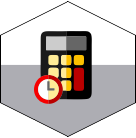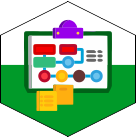Financial Auditing For Internal Auditors

Introduction
This course will expose delegates to principles and techniques involved in auditing financial statements and also evaluate the principle behind the preparation of the audited financial statements so as be able to give the management assurance of the financial statement that is being presented.
Course Objectives:
At the end of this training the delegates will be able to ;
- Define key accounting terms.
- Understand accounting rules, equations, and basic principles.
- Demonstrate how journal entries are used for accounting purposes.
- Discuss the Financial Accounting Standards Board’s GAAP hierarchy according to FASB Statement
- Review the characteristics of key financial statements.
- Calculate key ratios from a company’s financial statements.
- Differentiate between management-level reporting and consolidated financial statement-level reporting.
- Analyze data using horizontal and vertical analysis.
- Describe revenue process activities and associated rules.
- Practice using a risk assessment template to analyze risks and design and test controls.
- Identify the basic elements of an accounting scandal (fraud).
- Discuss how Enterprise Resource Planning (ERP) supports and automates business processes.
- Identify audit techniques to use in performing an application review of a financial audit.
Target Audience
- Internal auditors of both private and public sector
- professionals interested in evaluating and auditing Financial statements
Course Outline
Accounting and Auditing Review
- Define key accounting terms.
- Understand accounting rules, equations, and basic principles.
- Demonstrate how journal entries are used for accounting purposes.
- Discuss the Financial Accounting Standards Board’s (FASB’s) GAAP hierarchy according to FASB Statement Perform a risk assessment using the financial auditing process.
- Evaluate controls in the audit process by using finance-related management assertions.
- Review an IIA Practice Guide about formulating and expressing internal audit opinions.
Financial Statements — An Overview
- Review the characteristics of key financial statements.
- Recognize the flow of information from source documents to financial statements.
- Identify the components of a financial balance sheet.
- Distinguish where in an income statement financial accounts should appear.
- Calculate key ratios from a company’s financial statements.
Business Processes and Accounting
- Differentiate between management-level reporting and consolidated financial statement-level reporting.
- Analyze data using horizontal and vertical analysis.
- Describe revenue process activities and associated rules.
- Describe procurement process activities and associated rules.
- Describe fixed asset process activities and associated rules.
- Recall key revenue, liability, and inventory-related ratios.
- Practice using a risk assessment template to analyze risks, and design and test controls.
Recipes for Cooking the Books
- Identify the basic elements of an accounting scandal (fraud).
- Identify the five most common financial “games.â€
- Calculate financial indices to use in analyzing data.
Technology and Accounting
- Discuss the risks and control breakdowns of User-developed Applications (UDAs) and best practices for controls over UDAs.
- Describe how to minimize risk and limit exposure in using spreadsheets.
- Discuss how Enterprise Resource Planning (ERP) supports and automates business processes.
- Identify audit techniques to use in performing an application review of a financial audit
Fee
₦161,000
Course Outline
Fill the form below and the full course content will be sent to you
Training Category
-
Accounting & Finance

-
Leadership

-
Quality Control

-
Human Resources

-
Interpersonal Skills & Self Development

-
Secretarial & Administrative

-
Warehouse Management

-
Audit & Finance

-
Health And Safety

-
Contract, Project And Procurement Management

-
Planning And Strategy Management

-
Digital Innovation And Transformation

-
Data Management & Business Intelligence

-
Virtual Learning